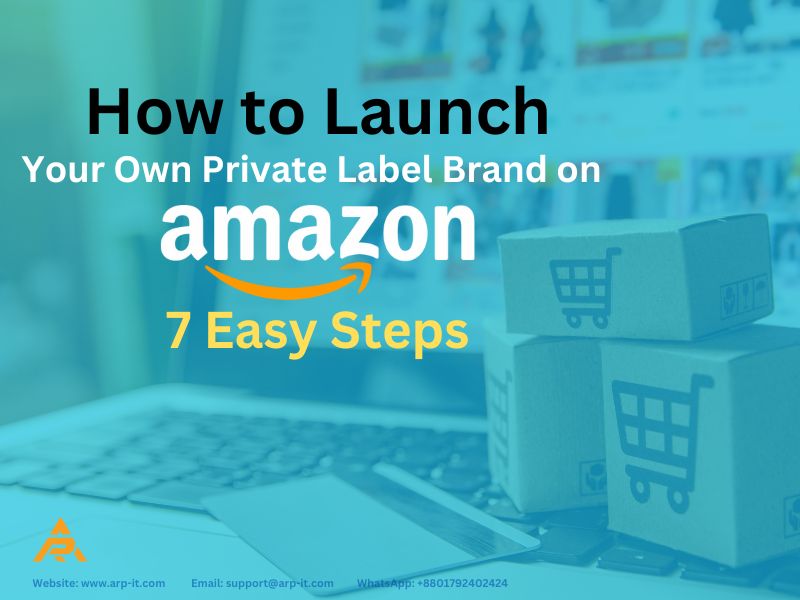🚀 Why Your Business Needs a Website
28 April 2023

Amazon is the largest and most popular e-commerce platform in the world, with over 300 million active customers and millions of products for sale. If you want to start your own online business and sell products on Amazon, one of the best ways to do it is by creating your own private-label brand.
A private label brand is a product that you sell under your own brand name, but that has been manufactured by someone else. In other words, you decide what products you want to sell, contact a manufacturer and have them produce those goods for you, apply your own brand label on the products, and then sell them on Amazon.
.jpg)
So how do you start and grow your Amazon private label business in 2023? Here are some steps that you need to follow:
The first and most important step is to find a profitable product niche that you can sell on Amazon. You want to find a product that has high demand, low competition, good margins, and low seasonality.
.jpg)
Once you have decided on your product niche, the next step is to find a reliable manufacturer who can produce your products according to your specifications.
.jpg)
Creating your own brand is one of the most exciting and rewarding parts of selling private-label products on Amazon. A strong brand can help you stand out from the crowd, attract loyal customers, and increase your sales.
.jpg)
Optimizing your listing is crucial for selling private-label products on Amazon. A well-optimized listing can help you rank higher on Amazon’s search results, attract more clicks and conversions, and boost your sales.
.jpg)
Managing your inventory is essential for selling private-label products on Amazon. A good inventory management system can help you avoid stockouts, overstocking, and other issues that can affect your sales and reputation.
.jpg)
Promoting your products is vital for selling private-label products on Amazon. A good promotion strategy can help you increase your visibility, traffic, and conversions, and boost your sales.
.jpg)
Scaling your business is the ultimate goal of selling private-label products on Amazon. A scalable business can help you increase your sales, profits, and market share, and achieve your long-term vision.
.jpg)
Selling private-label products on Amazon is a great way to start and grow your own online business. It allows you to create your own brand, control your own products, and enjoy higher profit margins.
However, it also requires a lot of planning, research, execution, and optimization. You need to follow the steps outlined in this guide and use the tools and tips recommended in this guide.
If you do it right, you can achieve success and scale your business on Amazon in 2023.
Here is a possible contact us option at the last of this blog:
If you have any questions or comments about this blog post or the topic of Amazon's private label business, please feel free to contact us. We would love to hear from you and help you with your online business journey. You can reach us by:
Thank you for reading and happy selling!
I hope you found this blog post helpful. If you have any questions or comments, please feel free to leave them below. Thank you for reading!
frontend.comments(1)
🎁 Get free iPhone 14 Pro Max: http://ignamet.ru/files/go.php 🎁 hs=7b54c062ddc3c056134c3e8449e68d40*
bphrqu